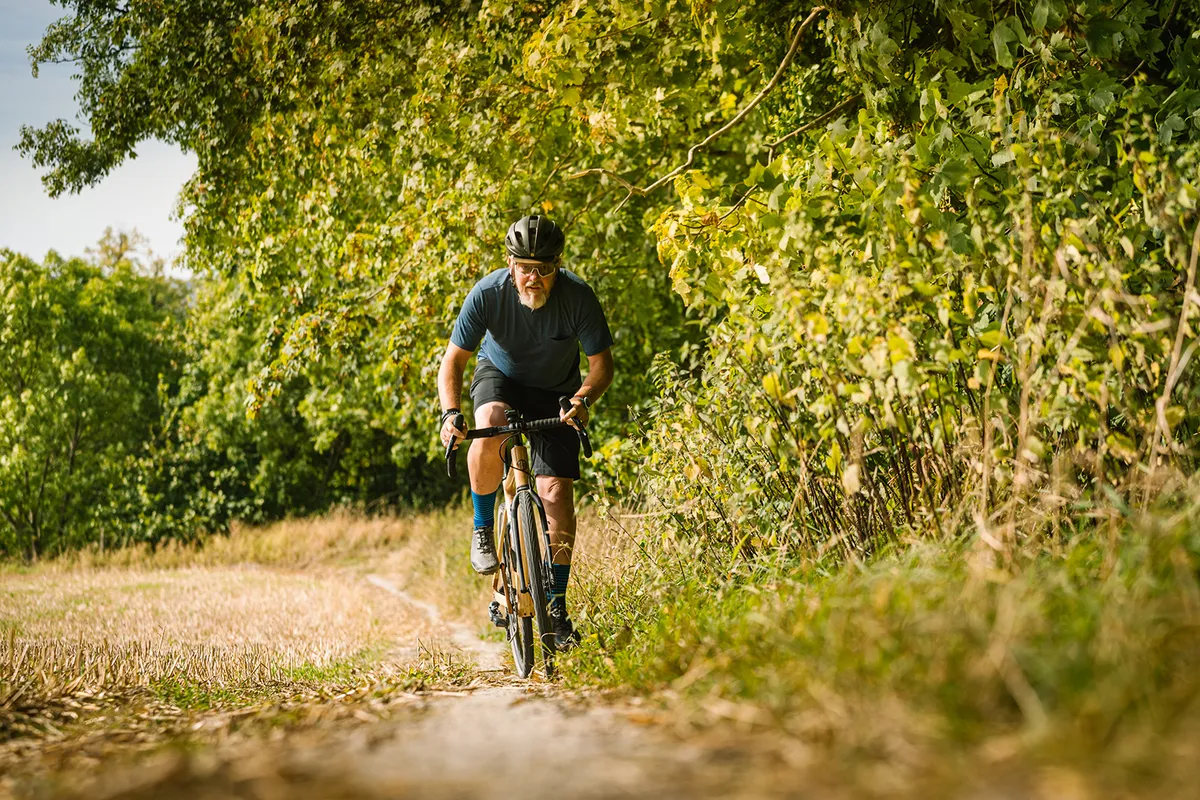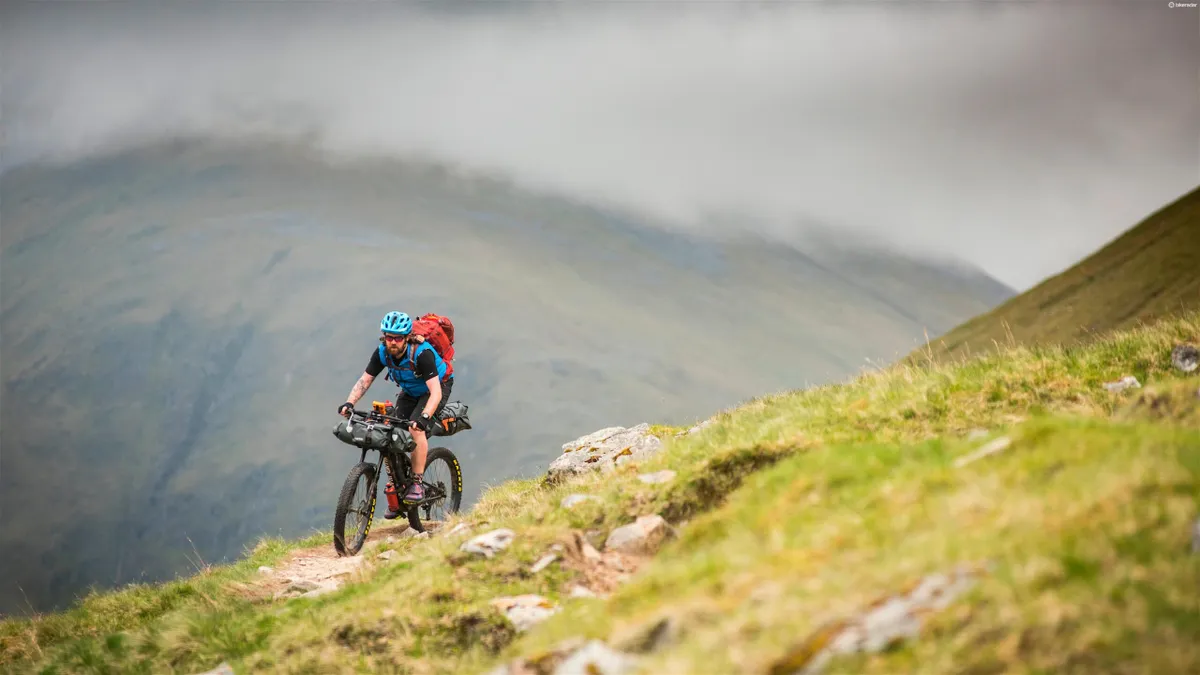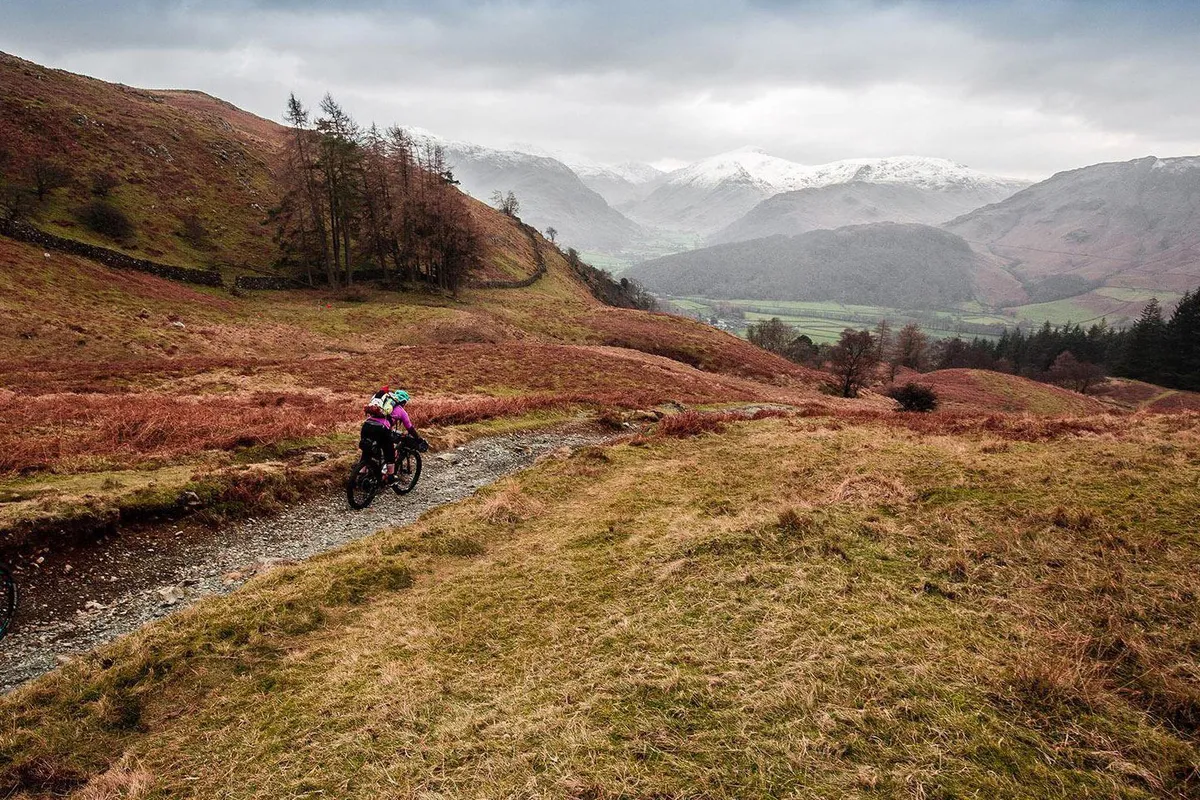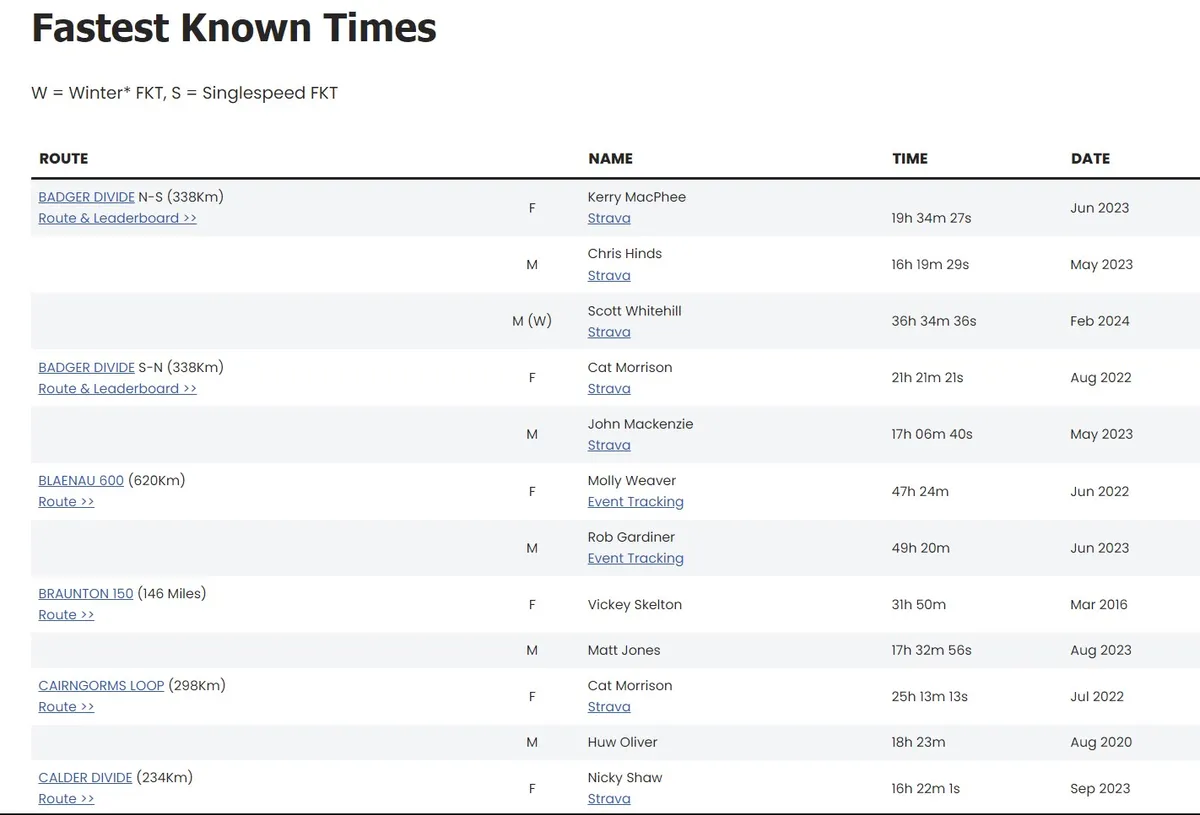Fastest Known Times (FKTs) are individual time trials raced over typically mixed-terrain ultra-endurance routes.
A long-established racing format in the thru-hiking and backpacking worlds, cycling FKTs have surged in popularity in recent years.
Here, we discuss FKTs with Molly Weaver – an ultra-endurance cyclist with, at the time of writing, eight UK FKTs. She's also one of the custodians of Fastest Known Times UK.
From the origins and rules of FKTs to tips for success, Weaver reveals all.
What is an FKT?

FKTs originated in ultra-running, with some FKT records as prestigious as a podium in an ultra-marathon race. It's also a recognised objective for thru-hikers on long trails, including the Continental Divide.
As ultra-endurance cycling has become increasingly popular, cycling FKTs have grown in popularity and prominence.
The FKT scene has a significant profile in the USA and UK, and is growing in Europe.

Many routes are off-road or include off-road sections, although there are FKTs established for road-only rides too, Weaver explains.
Road cycling records tend to be better established though, with records such as Land’s End to John O’Groats observed from as far back as the nineteenth century.
However, road records generally follow busy roads, which may increase the risk involved. FKTs, at least in the UK, tend to follow the route less travelled, Weaver continues.
What are the rules of an FKT?

There aren’t many rules for an FKT, Weaver says.
You have to ride solo and be self-supported (although there are some FKTs for pairs of riders).
Weaver says a recent Lakeland 200 attempt was disallowed because the rider rode alongside another rider, even though they claimed not to have drafted them.
A Fastest Known Time has to be over an established route. Many of these are also ridden as bikepacking routes. There has to be proof you rode the route and stuck to it, with a Strava upload being the go-to documentation method.
If you need to divert from the route, that’s okay provided you document why and the diversion isn't excessive or overly advantageous.
You can’t have food or water drops on the route, or take any other support that's not available to other riders. If you need supplies, you’ll have to use a shop.
The potential support offered by media crews has caused controversy, with some claiming even the morale boost of seeing familiar faces offers an unfair advantage.
Weaver says Fastest Known Times UK takes a relaxed approach to media coverage and photography.
In her eyes, provided no tangible support or information is provided to the rider, it's a good thing that helps promote FKTs.
What kind of routes can you set an FKT on?

Weaver says the shortest rides start at around 150km, but can easily surpass 1,000km.
In the UK, the route must include at least 20 per cent off-road riding.
Weaver highlights the Lakeland 200, the Trans-Cambrian Way and King Alfred’s Way as high-profile UK routes with FKTs, with the Lakeland 200 her favourite.
The big ones tend to be where there’s epic scenery, she explains.
Others are in places with a core of keen riders, with attempts snowballing as the ride’s profile increases.
Some routes are rideable on a gravel bike, while others, including the Lakeland 200, require a mountain bike.
Some ultra-endurance rides, including the Atlas Mountain Race, are best covered on a full-suspension mountain bike, while for others, a hardtail is fine.
In 2022, BikeRadar tried – and failed – to set an FKT on the Trans-Cambrian Way – though we did cheat and ride as a relay.
Why have FKTs become popular?

Weaver cites the accessibility of chasing FKTs as key to their popularity.
You don’t have the cost and the specific time constraints of traditional racing – you can have a crack at an FKT whenever you fancy it.
If you don’t take an FKT, you can always return and try again the following week.
It’s a solo effort too, which appeals to many riders.
There is now more publicity and more resources, Weaver says. More riders are aware of which routes exist and what the current FKTs are, so there’s something to aim for.
Plus, there’s the prestige of achieving an FKT.
The Fastest Known Times website in the UK, which Weaver helps moderate, generates a lot more traffic than she’d expected when it was set up a couple of years ago.
In some cases, multiple FKTs have been set on the same route in a single weekend. There’s now a leaderboard on the site, so if you narrowly miss an FKT, you’ll still get a mention.
How to validate an FKT record

The Fastest Known Times website enables you to log your ride.
You can use its contact form to register your attempt, ideally supported with a public Strava log file. Many riders send photos too. If there are any anomalies, you'll need to provide an explanation.
The team behind the site will perform some manual validation, including checking whether your GPS trace follows the route and that there aren’t any obvious anomalies in your ride record.
There are still a fair few routes with no FKT shown either for a female or male rider, plus you can suggest new routes that aren’t yet established on the site.
How to take an FKT – 10 tips from FKT UK founder Molly Weaver
- Don’t stop! Weaver says she stopped for only 15 minutes on her Trans-Cambrian Way FKT ride. On the other hand, Lachlan Morton aimed to stop for at least six hours each night when he rode the Continental Divide, to avoid burn-out over the 12 days.
- Work out what nutrition and hydration you need in advance. On some rides, you'll need to stop to buy food and refill bottles, while on others you may be able to carry all you need.
- Travel light enough to lift the bike over obstacles. Opening and closing gates can be time-consuming – lifting the bike over them and climbing over yourself will speed things up.
- Pace yourself. Even the shortest rides are around eight hours long, but most are over 12 hours. Some riders use heart rate or power to measure their effort, but Weaver feels power is less useful. Once you’re a few days into a ride, the numbers become irrelevant, she says, because they won't reflect those you measured before the ride, when you weren’t fatigued.
- Know the route – it’s easy to miss turns and lose time, and a few navigation errors can quickly add up. Study the map in advance.
- Don’t be afraid to walk tricky sections, particularly if you’re beginning to get tired. A bad crash and it could be game over.
- Schedule the level of rest and sleep you need. It’s easy to get sleep-deprived, which can increase the risk of an accident and will probably reduce your enjoyment. Plan to sleep earlier in the ride, because it’s easy to get too fatigued later on and difficult to make up the initial sleep deficit.
- Ensure your kit is up to the job – it must be able to stand the abuse it will get on the ride.
- Enjoy yourself. If you’re over-concerned about getting the FKT, you’re less likely to enjoy the challenge.
- Obviously, don’t ride an ebike or otherwise bend the rules. FKTs are based on trust, so abiding by the spirit of the ride is fundamental.
